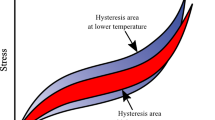Abstract
Generally, the most frequently used structural materials are metals which have high strength and stiffness. However, there are many cases, when other important properties come to the fore as well as high deformation by elastic behavior, high viscosity namely good damping effect. The metals do not have these above mentioned properties, but the rubber does. The rubber - thanks to its elastic behavior - is able to establish an elastic connection between hard and brittle structural elements, however, has high load carrying capacity. Vehicle components made of rubber usually exhibit large deformations. Cyclic finite deformations may induce increasing temperature in hyperelastic materials. This case - where changes in deformation and in temperature occur simultaneously - is called coupled thermomechanical problem. Both the mechanical and thermal processes have their own governing equations, that is why special techniques are needed for the computation. A special technique will be presented for solving coupled problems, this is operator split method. The goal of this paper is to show how to solve the coupled thermomechanical problem by the principle of virtual power and the principle of virtual temperature, and how to apply them together.
Access this chapter
Tax calculation will be finalised at checkout
Purchases are for personal use only
Similar content being viewed by others
References
Bonet, J., Wood, R.D.: Nonlinear Continuum Mechanics for Finite Element Analysis. Cambridge University Press, Cambridge (1997)
Holzapfel, G.A., Simo, J.C.: Entropy elasticity of isotropic rubber-like solids at finite strains. Comput. Methods Appl. Mech. Eng. 132, 17–44 (1996)
Ogden, R.W.: Large deformation isotropic elasticity: on the correlation of theory and experiment for incompressible rubberlike solids. Proc. Royal Soc. Lond. Ser. A 326, 565–584 (1972)
Ogden, R.W.: Elastic deformations of rubberlike materials. In: Hopkins, H.G., Sewell, M.J. (eds.) Mechanics of Solids, the Rodney Hill 60th Anniversary Volume, pp. 499–537. Pergamon Press, Oxford (1982)
Treloar, L.R.G.: The Physics of Rubber Elasticity, 3rd edn. Oxford University Press, New York (1975)
Reese, S., Wriggers, P.: A material model for rubber-like polymers exhibiting plastic deformation: computational aspects and a comparison with experimental results. Comput. Methods Appl. Mech. Eng. 148, 279–298 (1997)
Böl, M., Reese, S.: Finite element modelling of rubber-like polymers based on chain statistics. Int. J. Solids Struct. 43, 2–26 (2006)
Pere, B.: Solution of coupled thermomechanical problems using p-FEM. In: 8th European Solid Mechanics Conference (ESMC 2012), CD-ROM, 9–13 July, Graz, Austria, 2 p. (2012)
Holzapfel, G.A.: Nonlinear Solid Mechanics. Wiley, Chichester (2000)
Gyarmati, I.: Non Equilibrium Thermodynamics. Műszaki Könyvkiadó, Budapest (1967)
Pere B.: Finite Element Analysis. http://www.sze.hu/~perebal/oktatas/oravazlatok/VEA.pdf. Accessed 25 Jan 2018
Égert, J., Pere, B.: Finite Element Analysis. Universitas Győr Nonprofit Kft., Győr (2011)
Acknowledgement
This paper was carried out as part of the EFOP-3.6.2-16-2017-00016 “Dynamics and control of autonomous vehicles meeting the synergy demands of automated transport systems” project implemented in the framework of the Szechenyi 2020 program. The realization of this project is supported by the European Union, co-financed by the European Structural and Investment Funds. I would like to thank for the financial support.
Author information
Authors and Affiliations
Corresponding author
Editor information
Editors and Affiliations
Rights and permissions
Copyright information
© 2018 Springer International Publishing AG, part of Springer Nature
About this paper
Cite this paper
Szüle, V., Pere, B. (2018). Modelling of Heat Generation in Vehicle Components Made of Rubber Caused by Finite Deformations. In: Jármai, K., Bolló, B. (eds) Vehicle and Automotive Engineering 2. VAE 2018. Lecture Notes in Mechanical Engineering. Springer, Cham. https://doi.org/10.1007/978-3-319-75677-6_12
Download citation
DOI: https://doi.org/10.1007/978-3-319-75677-6_12
Published:
Publisher Name: Springer, Cham
Print ISBN: 978-3-319-75676-9
Online ISBN: 978-3-319-75677-6
eBook Packages: EngineeringEngineering (R0)




